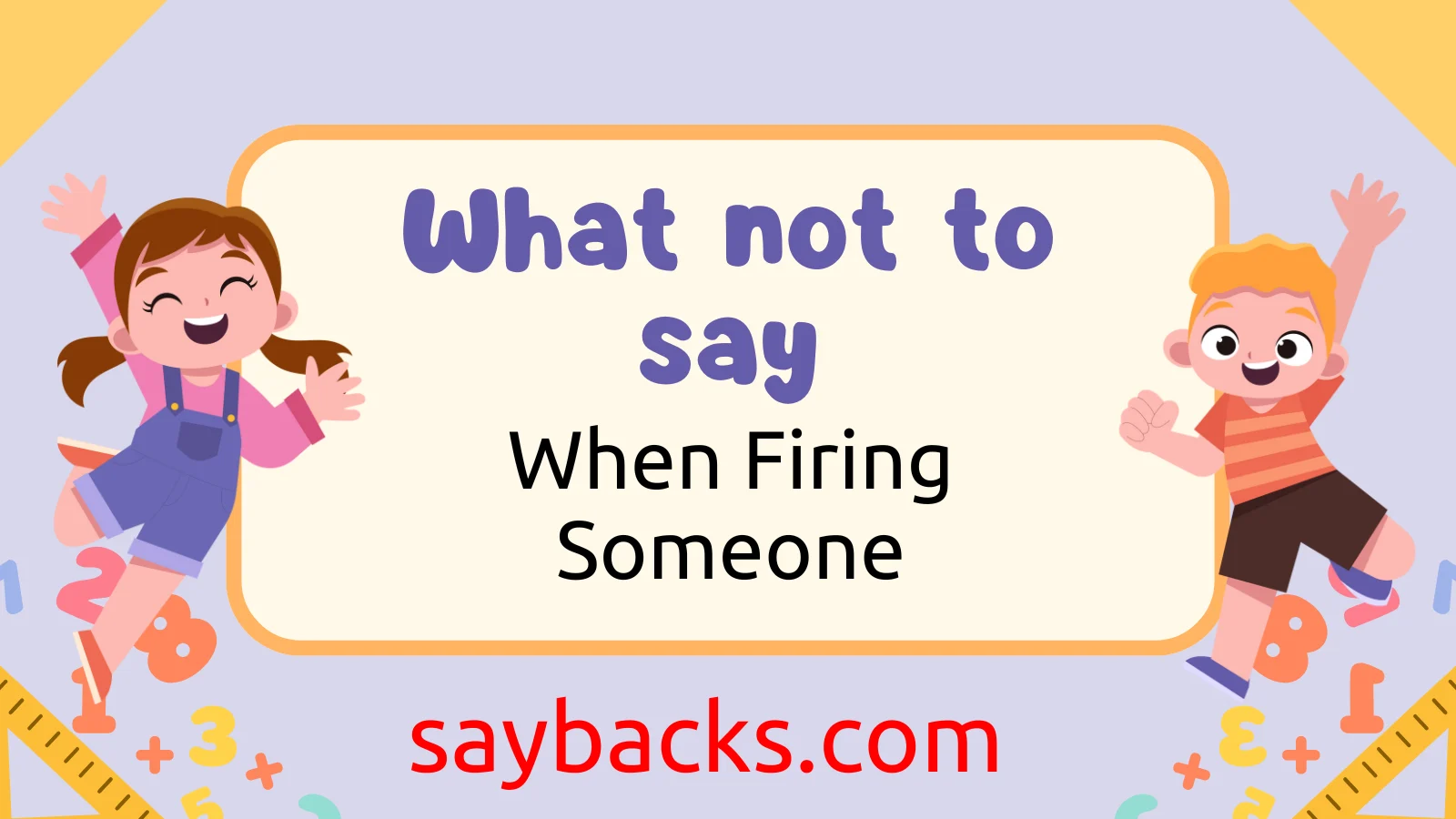Firing someone is one of the most challenging tasks a manager or supervisor faces. It can be an emotional and tense situation, but with the right words and approach, you can handle the conversation professionally, respectfully, and empathetically. What to say when firing someone is crucial in ensuring the process is clear, concise, and as painless as possible for both parties involved.
In this article, we’ll walk you through the best practices and phrases to use when terminating an employee, along with tips on maintaining dignity and respect throughout the process.
1. Start with the Reason for the Meeting
Be Direct but Respectful
The first thing you need to do is set the tone for the conversation. Start by letting the employee know the purpose of the meeting. “I’m afraid we have to discuss some important matters regarding your position here.” This will help the employee understand that something significant is about to be addressed.
Why It Works:
Starting the conversation with a clear and direct statement helps prepare the employee for the news. It avoids beating around the bush, which can create confusion or uncertainty.
2. Be Clear About the Decision
Explain the Decision Calmly
After addressing the purpose of the meeting, it’s time to deliver the news. Be straightforward but compassionate: “After careful consideration, we’ve made the decision to end your employment with [Company Name].” Keep the message clear and to the point.
Why It Helps:
Being clear avoids confusion and shows that the decision has been thoughtfully considered. It’s also essential to provide a concise explanation to avoid any misunderstanding.
3. Provide a Reason for the Termination
Offer a Clear, Honest Explanation
While the specifics of the termination may vary, providing a reason helps the employee understand why the decision was made. For example, “Your performance has not met the expectations outlined in your job description despite multiple opportunities to improve.” Or, “Unfortunately, due to changes in company direction, we are unable to continue your position.”
Why It Works:
Offering a reason provides closure and helps the employee understand that the decision wasn’t arbitrary. It also maintains transparency and fairness in the process.
4. Acknowledge Their Contributions
Be Compassionate and Respectful
It’s important to recognize the employee’s contributions to the company, even if their performance wasn’t up to par. “We appreciate the effort you’ve put into your work during your time with us.” Acknowledging their contributions humanizes the conversation and allows the employee to feel respected.
Why It Helps:
This acknowledgment helps to soften the blow and shows that you value the work they’ve done, even if it didn’t lead to the desired outcome.
5. Explain the Next Steps and Offer Support
Discuss Logistics and Offer Assistance
After the news is delivered, explain the next steps clearly. “We’ll provide you with your final paycheck, and you’ll receive information about your benefits and any severance package you’re entitled to.” Offer to assist with job placement or provide a reference if possible, especially if the employee’s termination wasn’t due to performance issues.
Why It Helps:
Providing logistical details helps the employee understand what happens next. Offering support, such as a reference, can make the transition easier for them.
6. Allow Them to Ask Questions
Create Space for Dialogue
Give the employee the opportunity to ask questions or express their feelings. “I understand this is difficult news, and I’m here to answer any questions you might have.” This shows that you care about their concerns and are willing to provide clarity.
Why It Works:
Allowing the employee to ask questions gives them a sense of agency and respect. It also provides an opportunity to clear up any misunderstandings.
7. End the Conversation with Empathy
End the Conversation Professionally and Kindly
After discussing the details, end the conversation on a positive note. “I truly wish you the best in your future endeavors, and I’m confident you’ll find a position that better suits your skills and goals.” Offering kind words of encouragement can help the employee leave with dignity.
Why It Helps:
Ending the conversation on an empathetic note helps maintain a positive relationship. It provides closure and leaves the employee feeling valued, even if they are no longer part of the team.
Final Thoughts: What to Say When Firing Someone
Knowing what to say when firing someone is crucial for both the well-being of the employee and the reputation of the company. Approaching the conversation with respect, transparency, and empathy can make a difficult situation more manageable. Be direct, clear, and provide as much support as possible. Offering kindness and understanding can help the employee transition smoothly and may even leave the door open for future opportunities, should circumstances change.
Always remember, the goal is not only to protect the company but also to treat the individual with fairness and respect during a challenging time.

